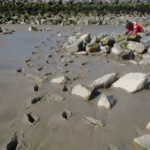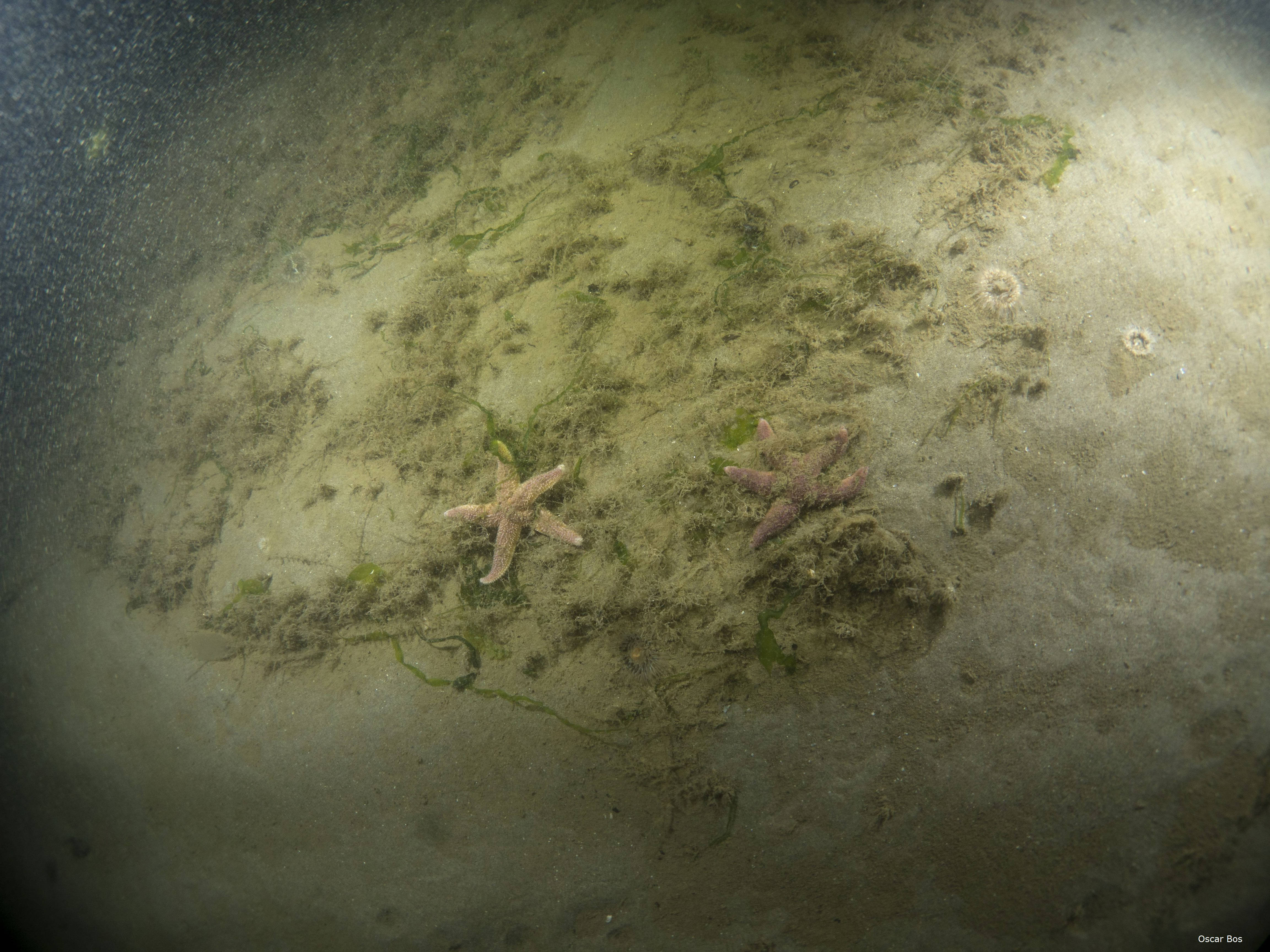
Example of H1110b – photo O.G. Bos.
The Ecoauthor report on the quality status and developments of benthic habitats and MSFD-areas of the Dutch North Sea is now available. The report presents the results of the application of the Benthic Indicator Species Index (BISI) on the 2015 monitoring data (considered the T0 as various measures of the Dutch Action plan Marine Strategy were just or still had to be implemented in 2015) and compares the quality status with the recent historic developments.
Some of the most important findings are:
– A stagnation and recent decline in the benthic habitat quality of offshore areas like the Frisian Front and Central Oystergrounds after years of improvement. This might be the result of a gradual movement of (seafloor disturbing) fisheries from the coastal zone to the offshore regions as suggested by results of specific BISI analyses (focussed on specific indicator species for seafloor disturbance) and the possible first improvements as observed in coastal areas.
– The permanent large impact of amongst others nutrients and pollutants (summarized as ecological disturbance) on benthic habitat quality, especially in the coastal zone, but also extending to further offshore areas like the Doggersbank. Although ecological disturbance is the most important pressure in the area of the Doggersbank, the observed decrease in benthic quality during the last two decades seems to be the result of increasing seafloor disturbance.
The study was commissioned by the Dutch Ministry of Agriculture, Nature and Food Quality (LNV) in consultation with the Ministry of Infrastructure and Water Management (IenW), and executed in cooperation with Wageningen Marine Research (WMR).
The entire report can be downloaded from here (at the moment only in Dutch, but an English translation is foreseen).
Wijnhoven, S. (2018). T0 beoordeling kwaliteitstoestand NCP op basis van de Benthische Indicator Soorten Index (BISI). Toestand en ontwikkelingen van benthische habitats en KRM gebieden op de Noordzee in en voorafgaand aan 2015. Rapport Ecoauthor & Wageningen Marine Research. Ecoauthor Report Series 2018 – 01, Heinkenszand, the
Netherlands.
Annex 1 ‘KRM factsheet D6C3 Benthische habitats kwaliteit (BISI)‘ is available from here.

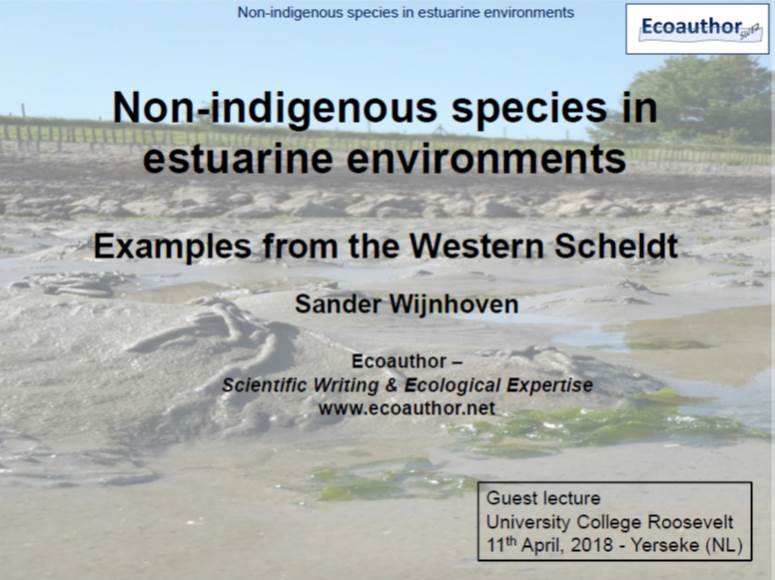 Today I had the opportunity to talk about our research findings on non-indigenous species in estuarine environments and the Western Scheldt in particular, during a guest lecture in the course ‘Marine Biology’ of the University College Roosevelt. For those interested the slides can be found here:
Today I had the opportunity to talk about our research findings on non-indigenous species in estuarine environments and the Western Scheldt in particular, during a guest lecture in the course ‘Marine Biology’ of the University College Roosevelt. For those interested the slides can be found here: 
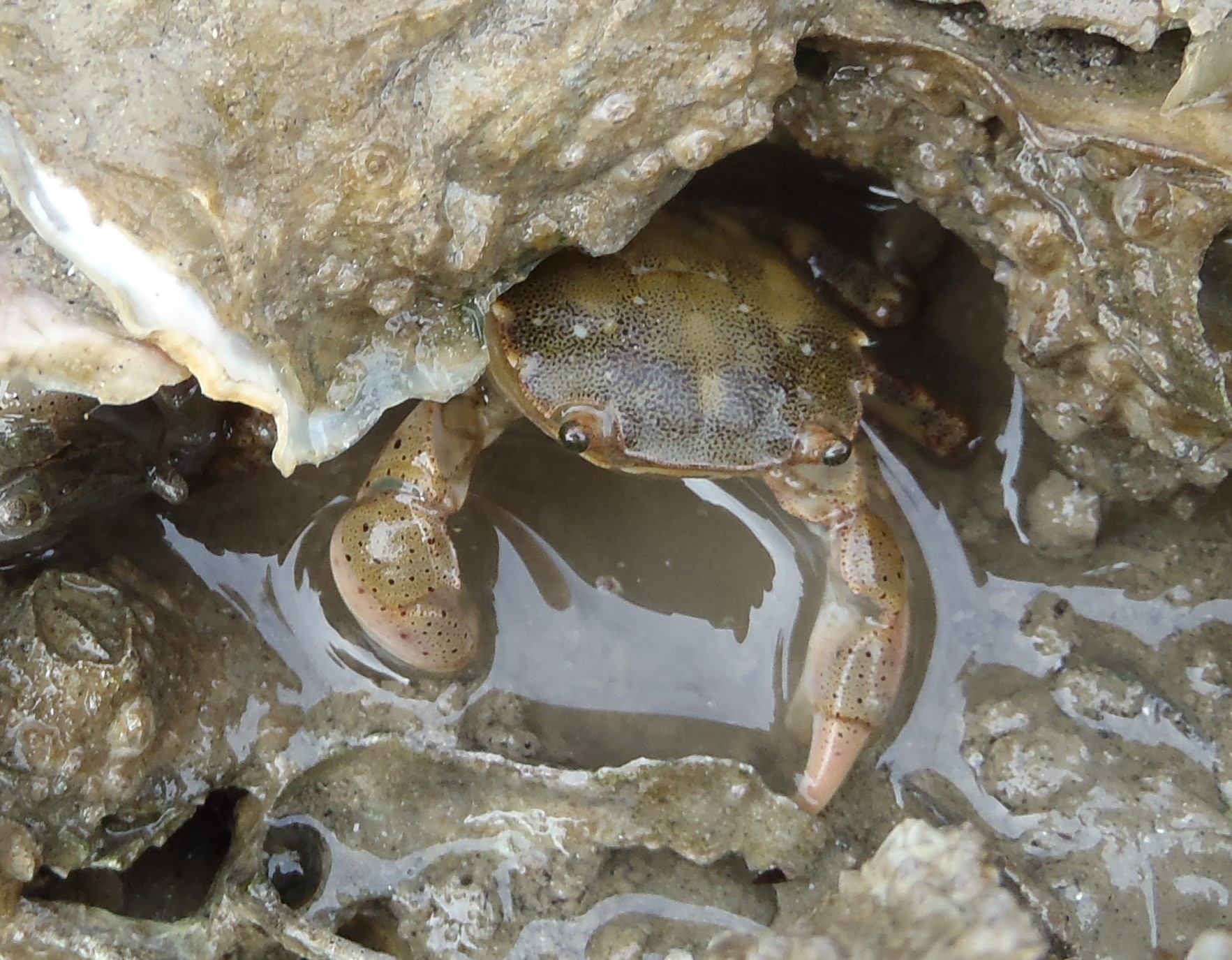 An
An 
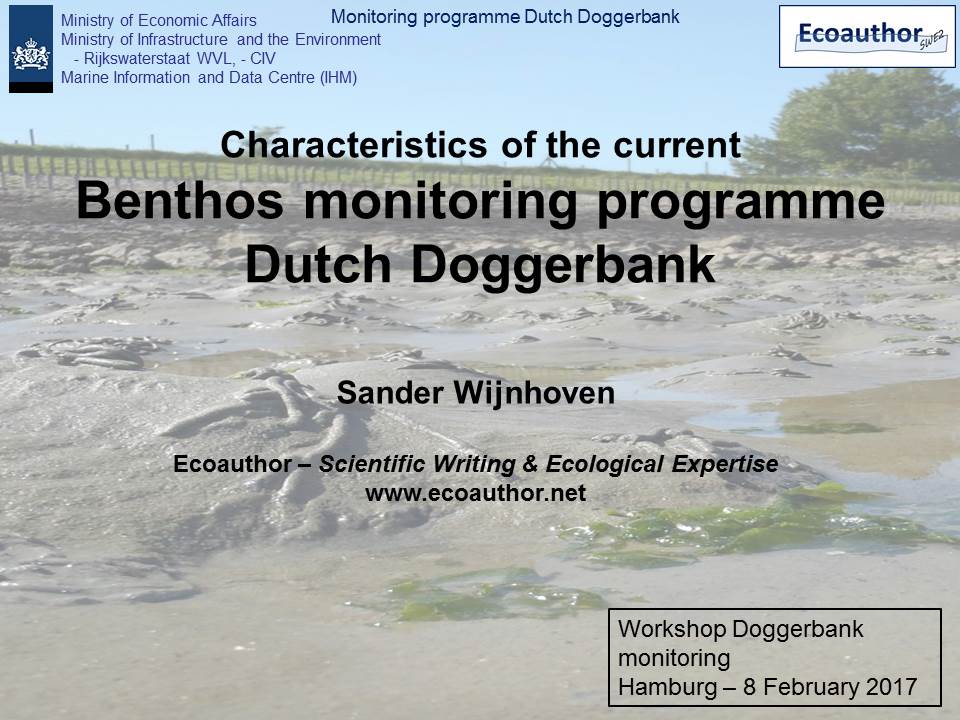
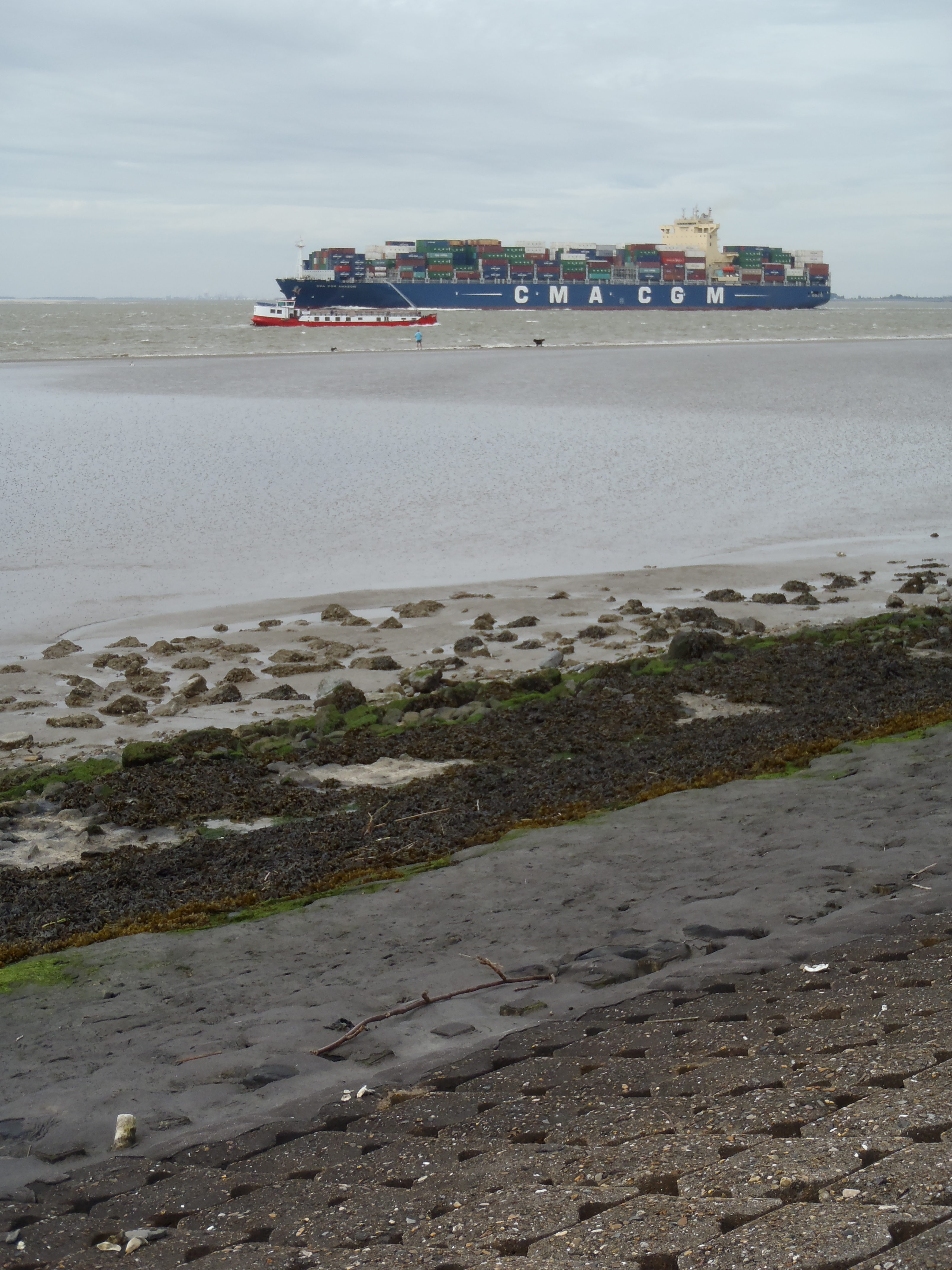 Ecoauthor is happy that the Framework Agreement Biology concerning Specialist Advice and Methodology Development was awarded to us by Rijkswaterstaat (RWS-CIV, Dutch Ministry of Infrastructure and the Environment) for a range of competences in the field of Hydrobiology, Ecological Monitoring of Flora & Fauna, and Ecological Mapping. The Agreement is signed for three years. We are looking forward to a fruitful cooperation and are ready to put it in practice.
Ecoauthor is happy that the Framework Agreement Biology concerning Specialist Advice and Methodology Development was awarded to us by Rijkswaterstaat (RWS-CIV, Dutch Ministry of Infrastructure and the Environment) for a range of competences in the field of Hydrobiology, Ecological Monitoring of Flora & Fauna, and Ecological Mapping. The Agreement is signed for three years. We are looking forward to a fruitful cooperation and are ready to put it in practice.